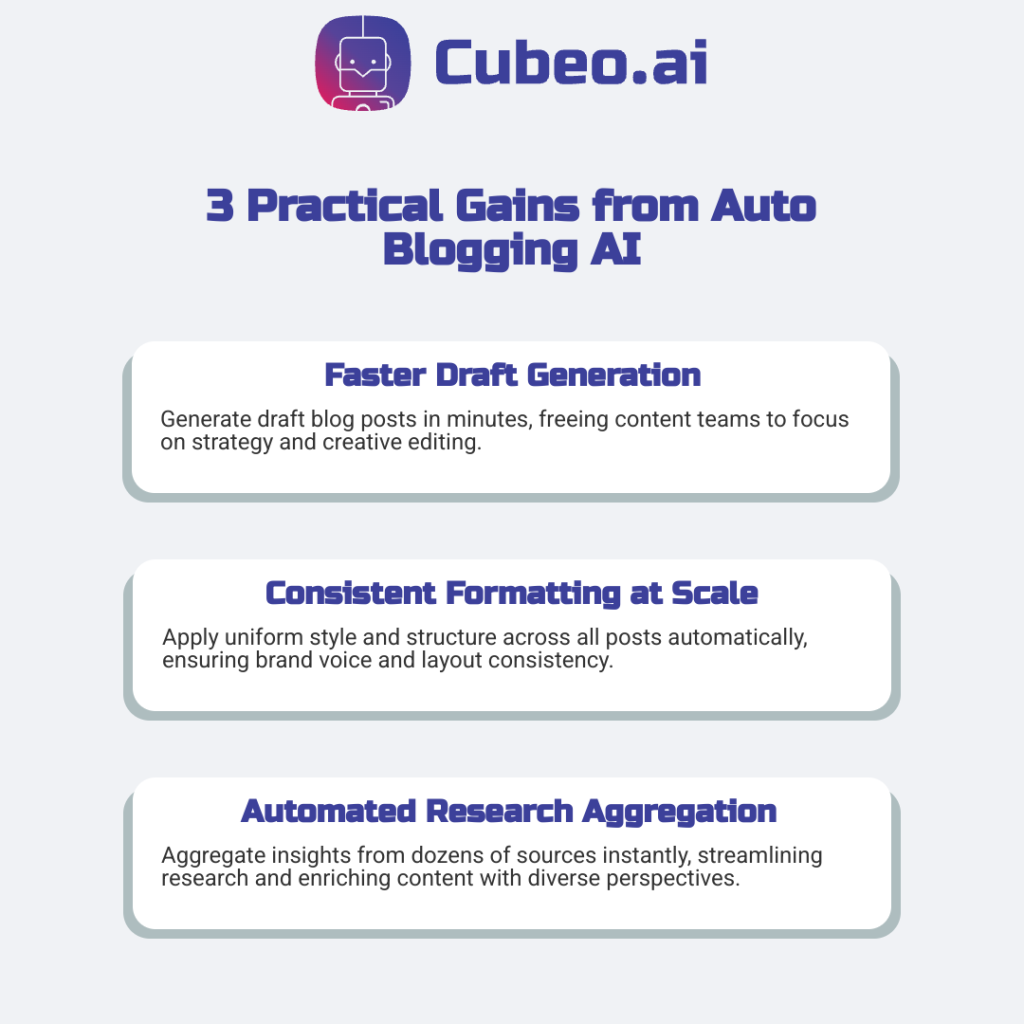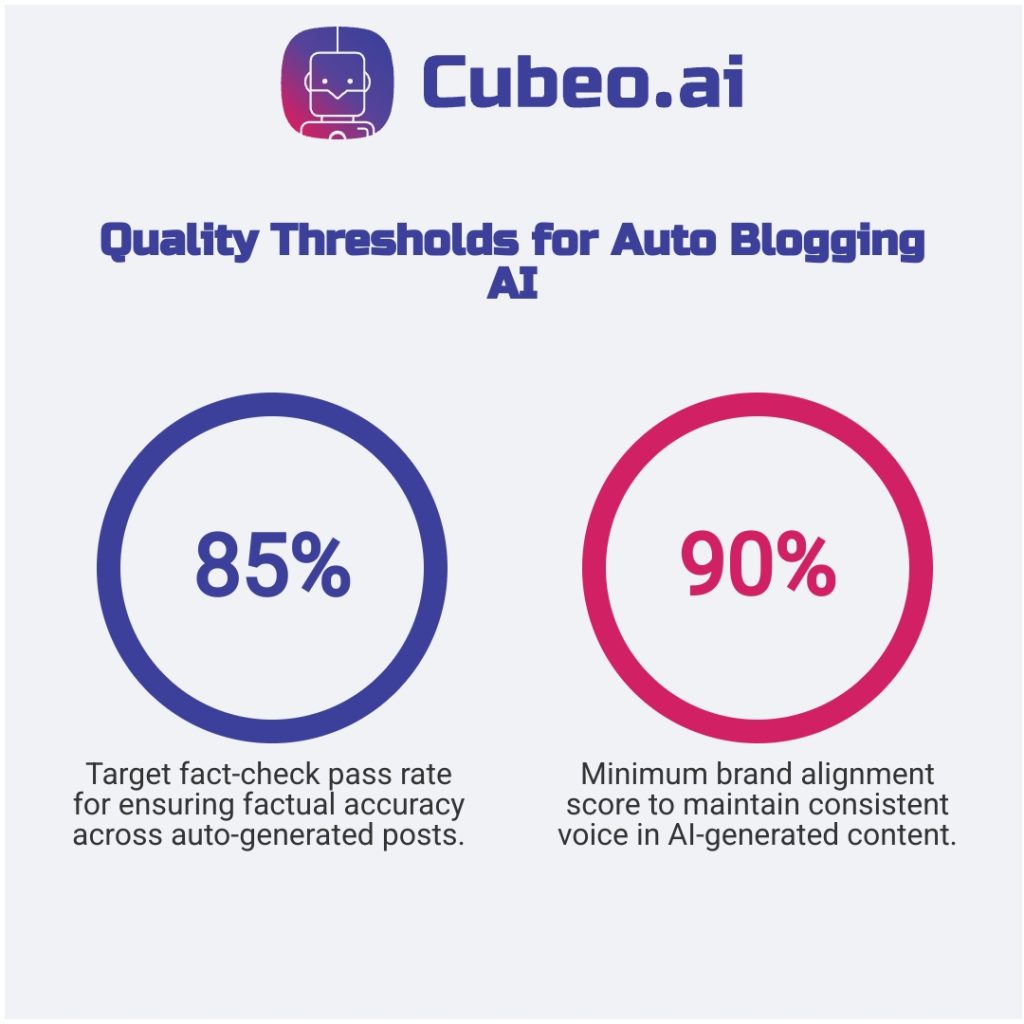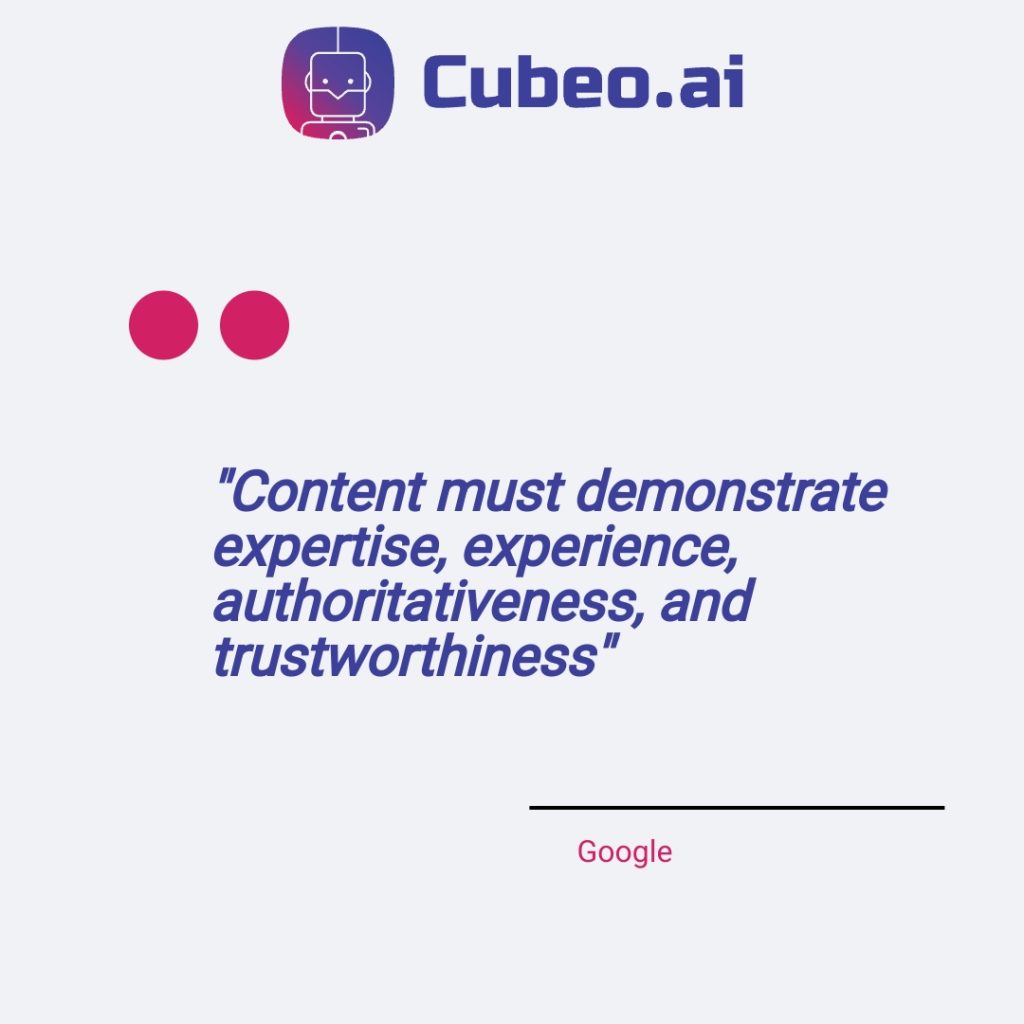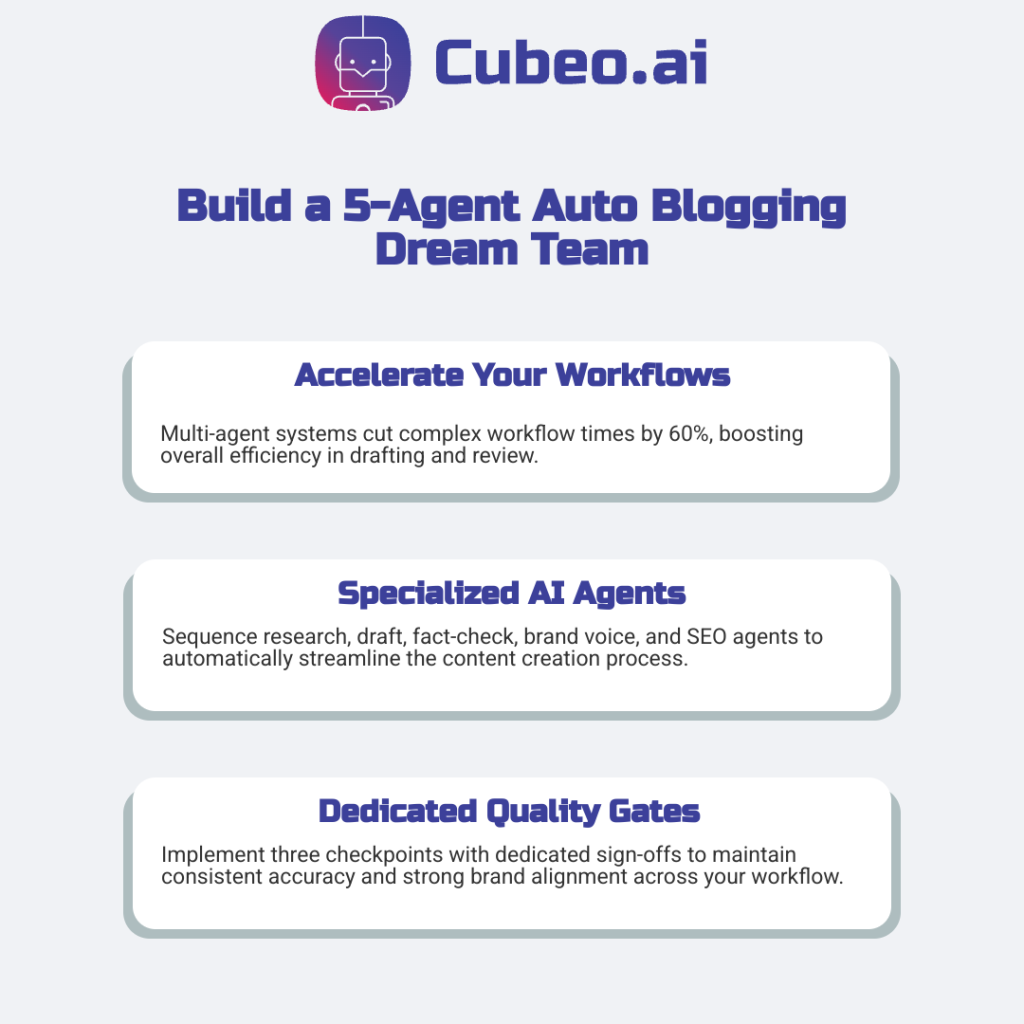Ready to transform your content production without the typical AI pitfalls? Let’s dive into the system that’s already working in production environments.
Auto Blogging AI Pros and Cons: A Production-Ready Guide for Content Teams
Content teams face a simple choice: use auto blogging AI to scale or risk thin content that hurts search performance.
Auto blogging AI (automated systems that research and draft posts) can deliver those gains, but Google’s helpful content guidance now tightens how search evaluates quality. Many teams also underestimate hidden costs like data prep, embeddings storage (where semantic vectors live), and review cycles.
You need gates, not shortcuts. This guide gives you a 6-point anti-thin checklist and a deployable multi-agent workflow that includes LEO optimization strategies you can implement.
Start by adding a source-check agent to your current workflow.
What Auto Blogging AI Means for Content Teams
Quick takeaway: auto blogging AI can multiply draft throughput and free your team for higher-value work, but only with human gates like source checks, fact-checks, and editor sign-offs.
SuperAGI’s 2025 report shows 80% of bloggers now use AI for content tasks (a 15% rise since 2023), with adopters reporting 25% lifts in organic traffic and 30% higher conversion rates. Team-GPT’s case studies show one agency doubling output from 80 to 160 monthly articles without adding headcount, saving 85+ hours per month.
You get 3 practical gains: faster drafts that generate in minutes, consistent formatting at scale, and research that aggregates dozens of sources automatically. The biggest misconception? That you can set it and forget it.
Production-ready systems need human oversight at every stage. Automated drafts require fact-checking and tuning tone and phrasing to match your brand before publishing.

Measuring Success Beyond Speed Metrics
Speed gains from auto blogging AI mean nothing if your content fails quality checks or damages brand reputation. Enterprise research shows only 28% of marketers rate their content strategy as very effective, with 30% struggling with quality content creation and 21% facing brand voice inconsistency issues.
Essential KPIs include content quality scores, fact-check pass rates, and brand voice consistency measurements. (Fact-check pass rate = % of factual claims verified in a 20-item audit; citation density = credible sources per 1,000 words; brand alignment = automated style score vs brand voice sample.)
Set minimum thresholds for healthy auto blogging: 85% accuracy rate and 90% brand alignment based on industry best practices.
Warning signs that indicate thin content risk:
- Fact-check pass rates below 80%
- Repetitive phrasing across multiple articles
- Low citation density (fewer than 3 sources per article)
- Brand voice scores dropping below 85%
Track critical gates (fact-check pass rate, brand voice score) weekly and broader signals (citation density, semantic richness) monthly.

Hidden Costs That Derail Auto Blogging Projects
Expect auto blogging costs to fall into three buckets that can triple your initial budget. RyRob’s 2025 breakdown shows first-year content automation projects range from $34.50 to $941.40 monthly, with hidden operational expenses often exceeding tool costs.
Data prep—cleaning, structuring, and converting content into embeddings (machine-readable format for AI search)—requires specialized tools, time, and extra storage costs that teams rarely budget for initially.
Infrastructure expenses accumulate fast. Inblog.ai reports hosting tiers from $3-$30 monthly, plus embeddings storage (extra database costs for AI search) and API calls ranging hundreds to low thousands monthly depending on model tier and publishing volume.
Human review cycles represent the biggest surprise in any content automation budget. Personnel costs range $100-$500 per post when factoring fact-checking, brand alignment, and legal compliance—even automated drafts need editorial oversight.
Google Safe Guardrails Every Auto Blogging AI Team Needs
When you run auto blogging AI, compliance failures can tank your search rankings faster than any algorithm update. Google’s official guidelines state that “content must demonstrate expertise, experience, authoritativeness, and trustworthiness” while avoiding scaled content abuse through automation.
6-point anti-thin content checklist:
- Originality: Unique insights beyond AI training data
- Expertise: Subject matter depth from human knowledge
- Citations: Credible external sources—aim for multiple high-quality sources (many teams target ~3 per 1,000 words)
- User value: Solves specific problems readers face
- Depth: Comprehensive coverage of the topic
- Freshness: Current information and recent examples
Start with weekly audits for new AI-published content for the first 30-90 days; move to biweekly once quality stabilizes. Track E-E-A-T scores, citation quality, and user engagement metrics.
For comprehensive AI ethics framework and responsible deployment practices, establish clear guidelines around transparency and human oversight.

Build a 5 Agent Auto Blogging AI Dream Team
Auto blogging AI scales drafting when work is split across focused agents with human gates. Multi-agent systems reduce task time by 60% in complex workflows.
Your 5-agent structure:
- Research Agent — gathers and validates sources
- Draft Agent — creates outline and first draft
- Fact-Check Agent — verifies claims and citations
- Brand Voice Agent — tunes tone and messaging
- SEO Optimizer Agent — metadata, internal links, schema
Agents hand off in sequence: research → draft → fact-check → voice → SEO. LangChain based implementations show 91% improved business outcomes with structured handoff protocols.
Start with no-code platforms offering visual workflow builders and pre-configured agent templates. Use AI team implementation strategies to design your deployment roadmap.




